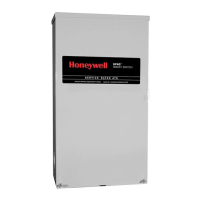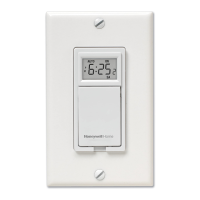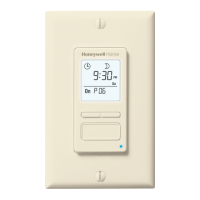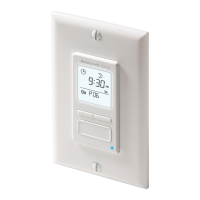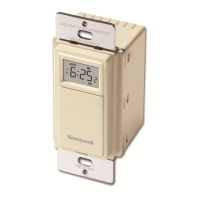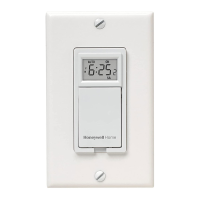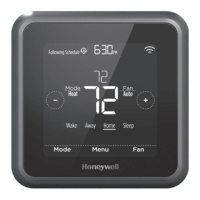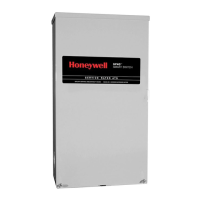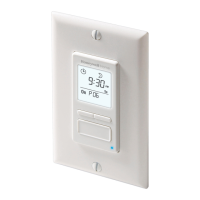9 EN1C-9999SZ22 R1104
CHECK OUT AFTER INSTALLATION
INSTALLATION CHECKOUT
Preliminary inspection - make certain that :
1 System overload protection is correct (5A max.).
2 Wiring connections are correct and all terminal screws
tight.
3 Flame detector installation is complete.
4 The correct flame detector is used. Refer to table page 5.
5 Burner is completely installed and ready to fire with the
fuel lines purged of air.
6 Combustion chamber and flues are clear of fuel.
7 Power is on at the system main switch.
FLAME DETECTOR CHECKOUT
The best guide to the performance of a flame detector is
given by the FLAME CURRENT value.
The expected maximum and minimum values of flame current
for the various types of flame detectors are given in the table
page 12.
Note that the following have an influence on flame sensing
performance :
1 Position, size and burning characteristic of the flame.
2 Refractory - when refractory temperature exceeds
1370C/2500F some ultraviolet radiation may occur.
Lower refractory temperature may affect photocells.
See relevant data sheets.
3 Temperature at flame detector
- Flame rods : ensure suitable rod is being used
- Other detectors : see relevant data sheet.
The R4348B has the possibility of measuring / recording the
flame current value in various ways, as follows :
(see also MODELS).
1 Using a Honeywell W136A micro-ammeter which is
plugged into a socket on the face of the R4348.
2 By reference to an LED-meter on the face of the R4348
which gives the value “at-a-glance”.
3 By relaying the current to existing customer recording/
indicating equipment.
HOT REFRACTORY TEST
In applications using caesium oxide detectors (rectifying
photocells) it is important to determine that hot refractory
does not simulate a flame after the end of normal run. If this
happens a flame condition is simulated after the real flame is
extinguished and a system restart is made impossible.
Test for this condition by operating the burner until the
refractory reaches maximum temperature and then stop the
burner fuel supply. At this point the flame current should
drop below 1mA, followed by a lockout within 0,8 to 1 second.
If this does not happen the photocell may be influenced by
the hot refractory.
THIS CONDITION MUST BE CORRECTED.
Try sighting the photocell at a cooler and/or more distant
refractory background. If that does not eliminate the trouble
try adding an orifice of filter to the detector. Continue to adjust
and test until the hold-in problem is eliminated.
NOTE : Repeat all flame detector tests after ALL adjustments
have been completed. All tests must be satisfied at the FI-
NAL flame detector position.
PILOT TURN-DOWN TEST
Ensure that any pilot which can be detected by the flame
sensing system is powerful enough to light the main burner
reliably.
ROTCETEDEMALF
ELBATPECCA.NIM
TNERRUCYDAETS
TNERRUCMUMIXAM
*DETCEPXE
FIKCEHCOTTAHW
SITNERRUCEMALF
KAEWROYDAETSNU
doremalF
B4007C
B/A5007C
A7007C
A8007C
A9007C
A1107C
D/C/B/A971Q
05.2 µA00.7 µA
aeragnihtraetneiciffuS
noitcennochtraedooG
emalffogninoitisopreporP
emalfnidor
llecotohpgniyitceR
A3007C
A0107C
A3107C
A4107C
05.2 µA05.5 µ **A
gnithgisreporP
snelnaelC
teloivartlU
G/F/E/A2107C
A7207C
A5307C
A4407C
A1607C
A6707C
00.2 µA
05.3 µA
05.3 µA
05.3 µA
00.3 µA
00.3 µA
05.2 µA
00.7 µA
05.7 µA
05.7 µA
05.7 µA
00.7 µA
00.7 µA
05.5 µA
gnithgisreporP
snelnaelC
setacidnilangisydaetsnunA
nagniweivsirotcetedeht
emalfehtfotrapelbatsnu
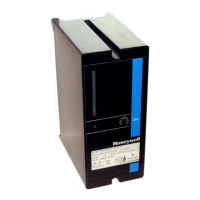
